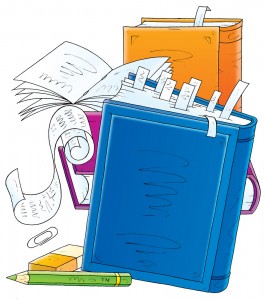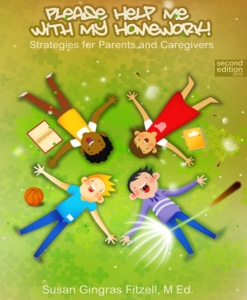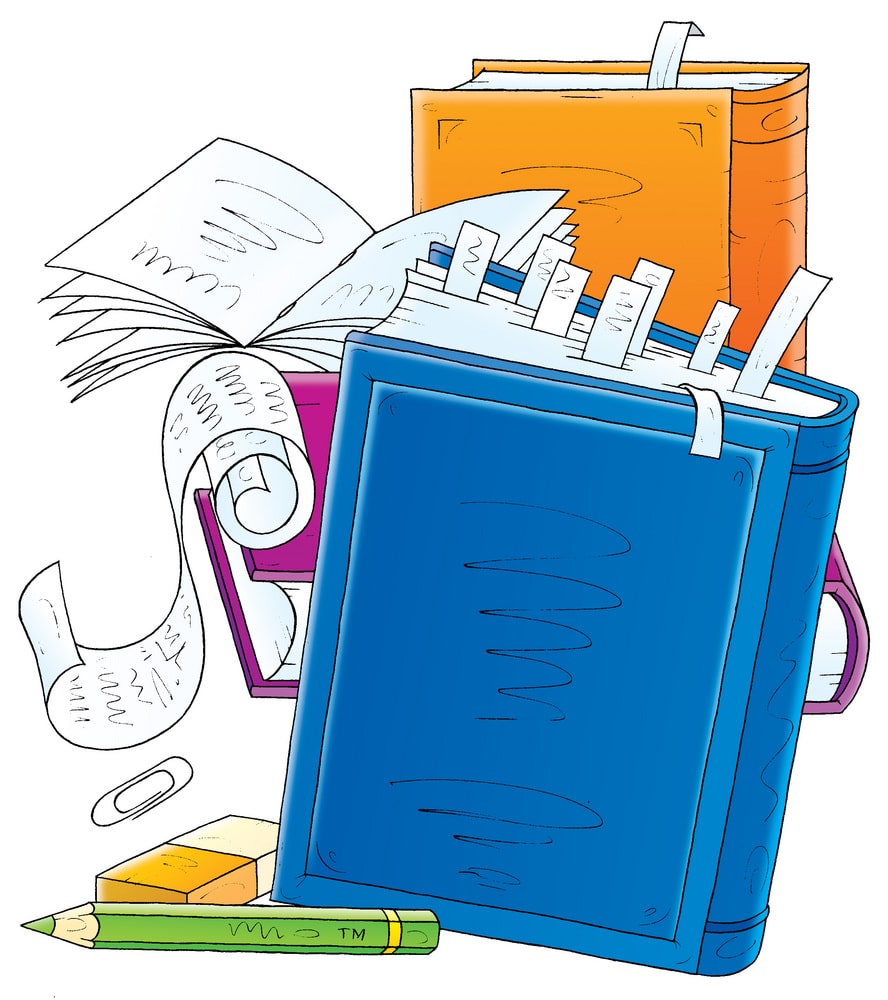1. Have students create a cognitive map with words and pictures to help them remember the sequence of events in a story or history lesson. Using colored pencils and crayons, or even a computer, students can create a step-by-step map of the story complete with descriptions of events and drawings or clip art to help them remember what happened.
 2. Assign each student five vocabulary words and ask them to make a visual flash card for each word. Students can find and print pictures from the internet or magazines to paste, or draw pictures onto their flash cards. Have students write the word under the picture on the front of the card and write the definition and a silly sentence using the word on the back of the card to help them remember the definition.
2. Assign each student five vocabulary words and ask them to make a visual flash card for each word. Students can find and print pictures from the internet or magazines to paste, or draw pictures onto their flash cards. Have students write the word under the picture on the front of the card and write the definition and a silly sentence using the word on the back of the card to help them remember the definition.
3. Ask students to make a “fold-able” for homework. A fold-able is a small book made out of folded pieces of paper that can become a personal study guide for one concept. For example, if students were making a fold-able about the cell cycle, each page of their mini book could display, through words and drawings, one step of the process.
4. Assign each half of the class ten vocabulary words and ask them to learn to finger spell them with sign language for homework. Then, in class, have each student take turns teaching the class one word that they learned to finger spell and its definition.
5. When students need to remember the sequence of events in a story or historical events, making a sequence chart for homework is a good option. A sequence chart is like a time line or story line, and can be drawn on any type of paper, although long adding machine tape works well. Ask students to illustrate with drawings AND describe with words each event in chronological order.
6. Another, even simpler, version of sequencing charts is to make many copies of a time line yourself, with only words describing the sequencing of events. For homework, students should illustrate this sequence and compare drawings and ideas the next day with a fellow student.
7. Have students create a mnemonic for five facts learned in class. The best mnemonic for each fact/concept can be published in a class memory strategy booklet.
8. Link familiar songs with new concepts. Ask students to pick a favorite song and make up new lyrics for the whole song, or part of the song, that will help them to learn a new concept. Brave students can sing their songs in front of the class, or simply read the lyrics they have written.
9. Have students make their own comic strip that puts a story, historical event, or even a math or science concept into their own words and a comfortable setting. Students can draw the comic on their own or, for students who do not like to draw, use makebeliefscomix.com, a website designed for creating custom comic strips.
10. Ask students to read a chapter or shorter passage from a book for homework and write down any words they do not recognize or understand. In class the next day, have each student read their words aloud and work together as a class to come up with correct definitions. Chances are, even though one student does not know a word, another student will. This will help all students by both teaching new words and reinforcing words they already know.
11. To help reinforce vocabulary words, give each student five to ten words and ask them to write a short story using each word at least once. Adding illustrations can be a separate assignment and will further students’ understanding of the words. Students can read their stories in front of the class or pair up to share stories.
12. A fun way to help students remember key historical figures is to have them make a “wanted” poster. Have students make the sign on a computer – with a picture of the historical figure from the internet – or ask them to hand draw a picture. Ask students to list the person’s date of birth and the “crimes” the person is wanted for (these will be facts about the person’s life). For example, George Washington would be wanted for being the first president of the U.S. and Abraham Lincoln would be wanted for giving the Gettysburg Address.


